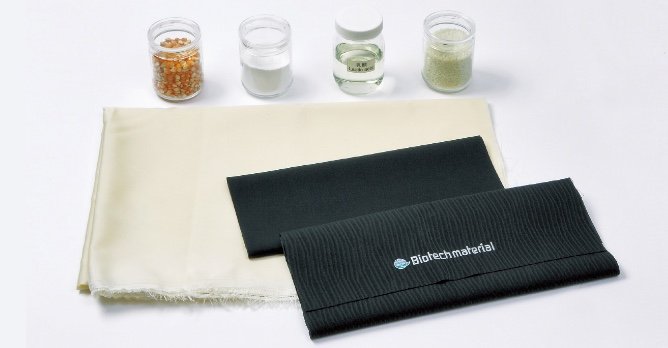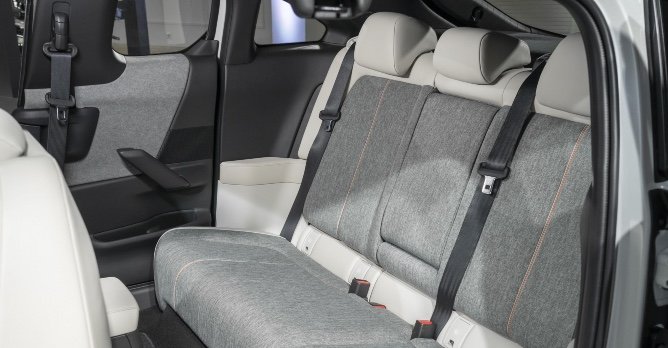Mazda renews committment to eco-friendly plastics
06 May 2020|1,811 views
As a global society we have become more aware of the impact we have on the environment and the need to create a sustainable future through developing products and processes that are contributing towards the reduction of emissions and materials that have an adverse effect on the environment.
In response to this need Mazda has been at the forefront of plastic recycling for over three decades and was the first automotive manufacturer to recycle bumpers from end-of-life cars.
Since 1992 Mazda has recycled approximately 1.28 million bumpers from Japanese market cars alone. The soon to be launched Mazda MX-30 electric car features a wide range of environmentally friendly materials and technologies, one of the most notable being the use of recycled plastic.
The upper section of the MX-30 door interior panel is trimmed in a reprocessed fabric made from recycled Polyethylene Terephthalate (PET) bottles. Development of a new method for integrated moulding of textile and plastic fibres made it possible to create a material with a soft touch that can be processed easily.
Following on from developing the world's first biofabric in 2007, Mazda's new Premium Vintage Leatherette, developed for the MX-30, is produced using water rather than organic solvents, which helps to reduce their environmental impact. Recognising the environmental need to recycle plastic, Mazda was the first automotive manufacturer to recycle used bumpers in 1992, initially used to produce pens and plastic automotive parts that were unseen, such as undertrays.
By 2001 Mazda had improved the paint removal process sufficiently to allow the use of the plastic to reinforce new bumpers, and by 2007 had refined the process to remove 99.9% of the paint, allowing the use of the recycled plastic in the manufacture of new bumpers.

Recycled plastic is now used extensively in all new Mazda cars. The first use of bioplastic was in the Mazda MX-5 in 2015 and has been subsequently used in Mazda CX-5, Mazda3, Mazda2, Mazda CX-30 and will be used on the Mazda MX-30.
In order to help preserve the planet's resources it is the responsibility of businesses to provide products and services that benefit the earth and society and Mazda continues to be at the forefront of developing environmentally friendly and recycled plastics for future product, reducing the use of fossil fuels and emissions as part of its Sustainable Zoom Zoom 2030 plan.
As a global society we have become more aware of the impact we have on the environment and the need to create a sustainable future through developing products and processes that are contributing towards the reduction of emissions and materials that have an adverse effect on the environment.
In response to this need Mazda has been at the forefront of plastic recycling for over three decades and was the first automotive manufacturer to recycle bumpers from end-of-life cars.
Since 1992 Mazda has recycled approximately 1.28 million bumpers from Japanese market cars alone. The soon to be launched Mazda MX-30 electric car features a wide range of environmentally friendly materials and technologies, one of the most notable being the use of recycled plastic.
The upper section of the MX-30 door interior panel is trimmed in a reprocessed fabric made from recycled Polyethylene Terephthalate (PET) bottles. Development of a new method for integrated moulding of textile and plastic fibres made it possible to create a material with a soft touch that can be processed easily.
Following on from developing the world's first biofabric in 2007, Mazda's new Premium Vintage Leatherette, developed for the MX-30, is produced using water rather than organic solvents, which helps to reduce their environmental impact. Recognising the environmental need to recycle plastic, Mazda was the first automotive manufacturer to recycle used bumpers in 1992, initially used to produce pens and plastic automotive parts that were unseen, such as undertrays.
By 2001 Mazda had improved the paint removal process sufficiently to allow the use of the plastic to reinforce new bumpers, and by 2007 had refined the process to remove 99.9% of the paint, allowing the use of the recycled plastic in the manufacture of new bumpers.

Mazda led another world's first in plastic development with plant-derived bio-based plastics in 2015
Recycled plastic is now used extensively in all new Mazda cars. The first use of bioplastic was in the Mazda MX-5 in 2015 and has been subsequently used in Mazda CX-5, Mazda3, Mazda2, Mazda CX-30 and will be used on the Mazda MX-30.
In order to help preserve the planet's resources it is the responsibility of businesses to provide products and services that benefit the earth and society and Mazda continues to be at the forefront of developing environmentally friendly and recycled plastics for future product, reducing the use of fossil fuels and emissions as part of its Sustainable Zoom Zoom 2030 plan.
Latest COE Prices
October 2025 | 2nd BIDDING
NEXT TENDER: 05 Nov 2025
CAT A$122,000
CAT B$131,889
CAT C$76,801
CAT E$136,000
View Full Results Thank You For Your Subscription.





















